Content
Outline
In this blog post, I will show how to exchange Data between Controller and View, and how to use Route for that.
This blog post is a series. You can see the other posts in below.
- Start Ruby on Rails on Mac
- Folder structure in Ruby on Rails
- Add new web page by Ruby on Rails
- Exchange Data between Controller, View and Route
- Use DB on Rails
Also, you can see the this blog post sample source code on Github
Variable
Before seeing Data exchanging, let’s see Variable types in Ruby. In Ruby, you can use Variable types like below.
| Name | Description | Assignment |
|---|---|---|
| Local Variable | - Variable exists in specific action(area) As this variable is used only within a specific action, you can not use it out of the action. | var = 1 |
| Instance Variable | - You can only use this variable in an object. - Variable area is in the object pointed self. | @var = 1 |
| Class Variable | - Variable is shared in all objects of the class. - You can access it i via Class method. - This variable is defined as betwenn Class definition and Class method definition. | @@var = 1 |
| Global Variable | - You can use this variable in everywhere the program. | $var = 1 |
Send Data from Controller to View
The reason that I introduced Variable above is that we use Instance Variable to send Data from Controller to View. Let’s see how to send Data from Controller to View. Open app/controllers/home_controller.rb file and modify it like below.
class HomeController < ApplicationController
def index
@name = 'dev-yakuza'
end
end
And then, we need to modify the View file of the Action. Open app/views/home/index.erb file and modify it like below.
Hello <%= @name %>!!
And, execute the command below to start Rails server.
bundle exec rails s
# bundle exec rails server
After it, open http://127.0.0.1:3000/ on the browser. You can see the Instance Variable works fine like below.
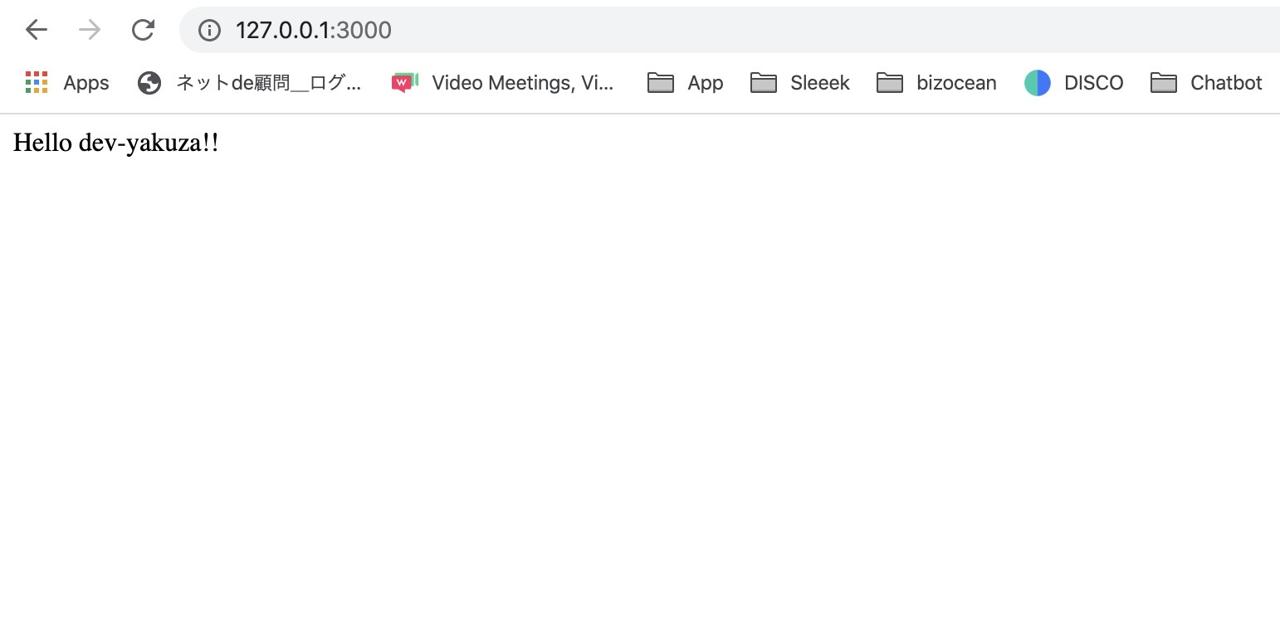
We use Instance Variable to send Data from Controller to View like above.
Sned Data from View to Controller
It is easy to send Data from Controller to View by using the Instance Variable. Because when Rails gets the Request via URL, the Controller works first and shows View with Data.
Sending Data from View to Controller means that User sends Data via View. View is already displayed on the user browser, so Sending Data from View to Controller is only that the user inserts Data.
To send Data from View to Controller, it’s the same as sending Data in a web service, so we can use GET / POST Request to send it.
GET request
Let’s modify View file for GET request. Open app/views/home/index.erb file and modify it like below.
Hello <%= @name %>!!<br/>
<a href="/?name=yakuza">Display yakuza</a>
And then, modify Controller to get the GET parameters. Open app/controllers/home_controller.rb file and modify it like below.
class HomeController < ApplicationController
def index
name = params[:name]
@name = name ? name : 'dev-yakuza'
end
end
It is the GET method, so we’ve passed Data using the URL with <a> tag(name=yakuza).
POST request
Let’s make POST request to send Data. Open app/views/home/index.erb file and modify it like below.
Hello <%= @name %>!!<br/>
<a href="/?name=yakuza">Display yakuza</a><br/>
<form action="/" method="POST">
<label for="name">name:</label>
<input type="text" name="name" />
<input type="submit" />
</form>
And when you open the browser, you can see the screen like below.
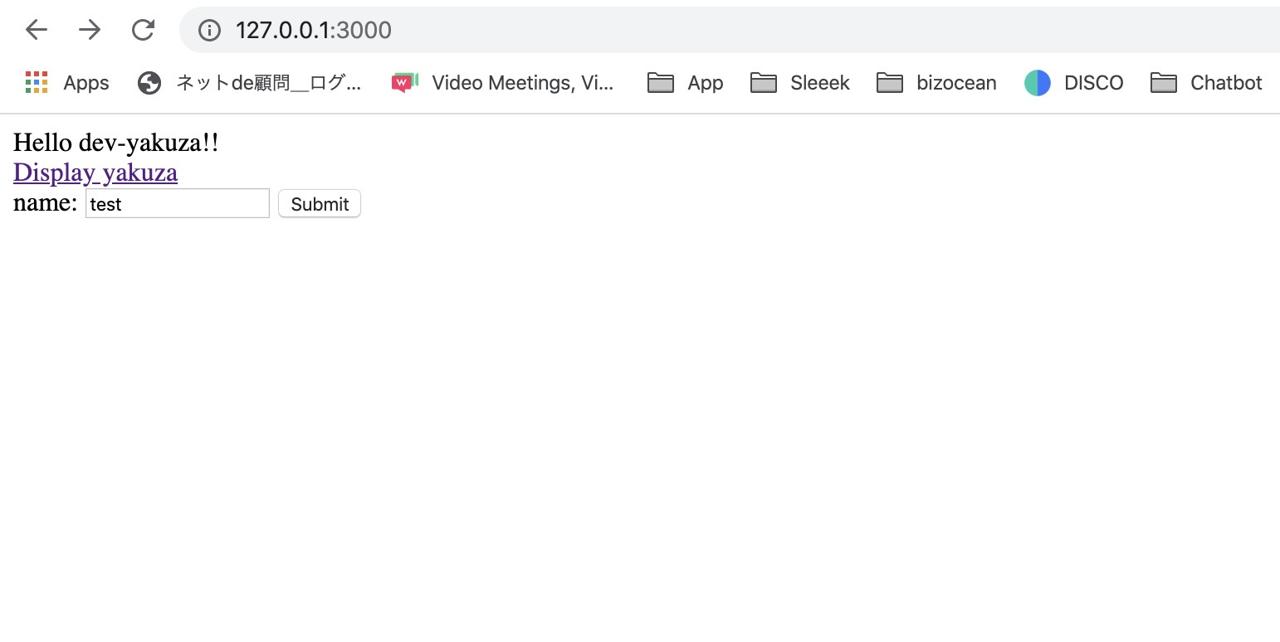
And then, when you insert Data and click Submit button, you can get the error like below.
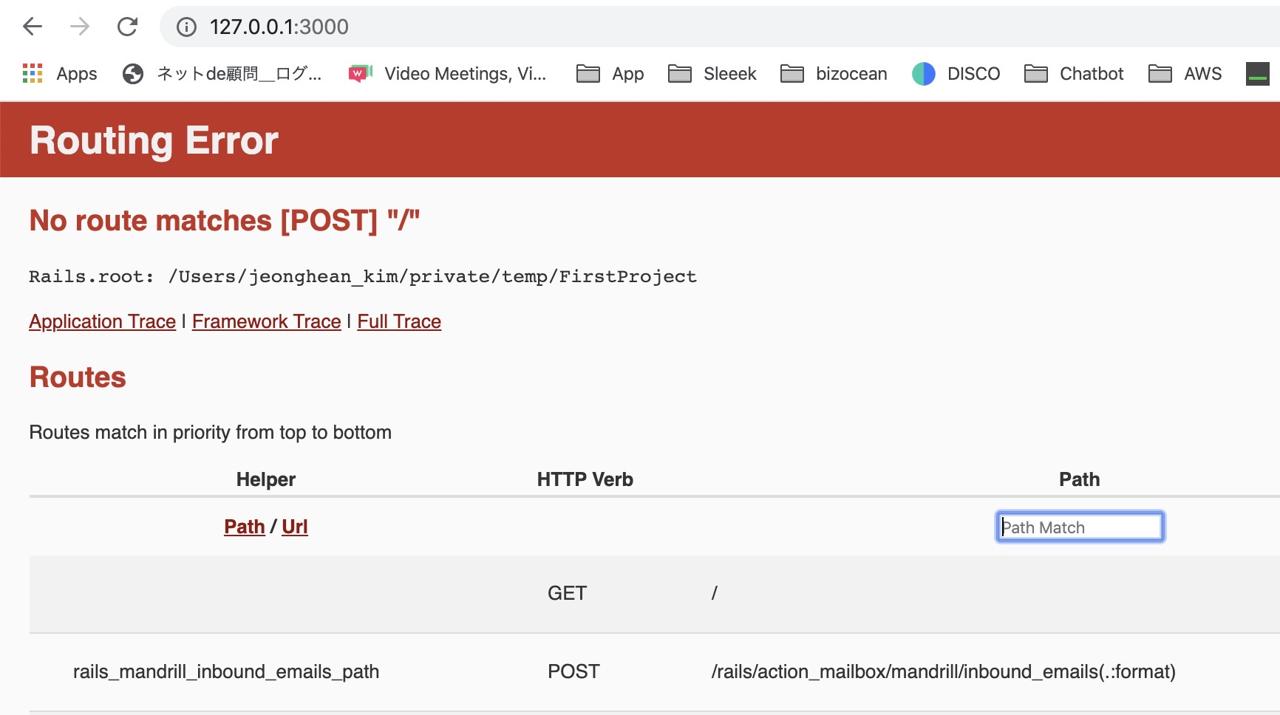
As you can see the error message(Routing Error), we got this error message becuase, we didn’t set Route configuration.
First, check ourRoute file, open config/routes.rb file.
Rails.application.routes.draw do
get '/', to: 'home#index'
end
As you see above, we configured that Rails can get get request on / URL, so when Rails get POST request, Routing Error is occurred.
Let’s set to get POST request. Open config/routes.rb and modify it like below.
Rails.application.routes.draw do
get '/', to: 'home#index'
post '/', to: 'home#index'
end
And then, to click submit button again, you can see the error message like below.
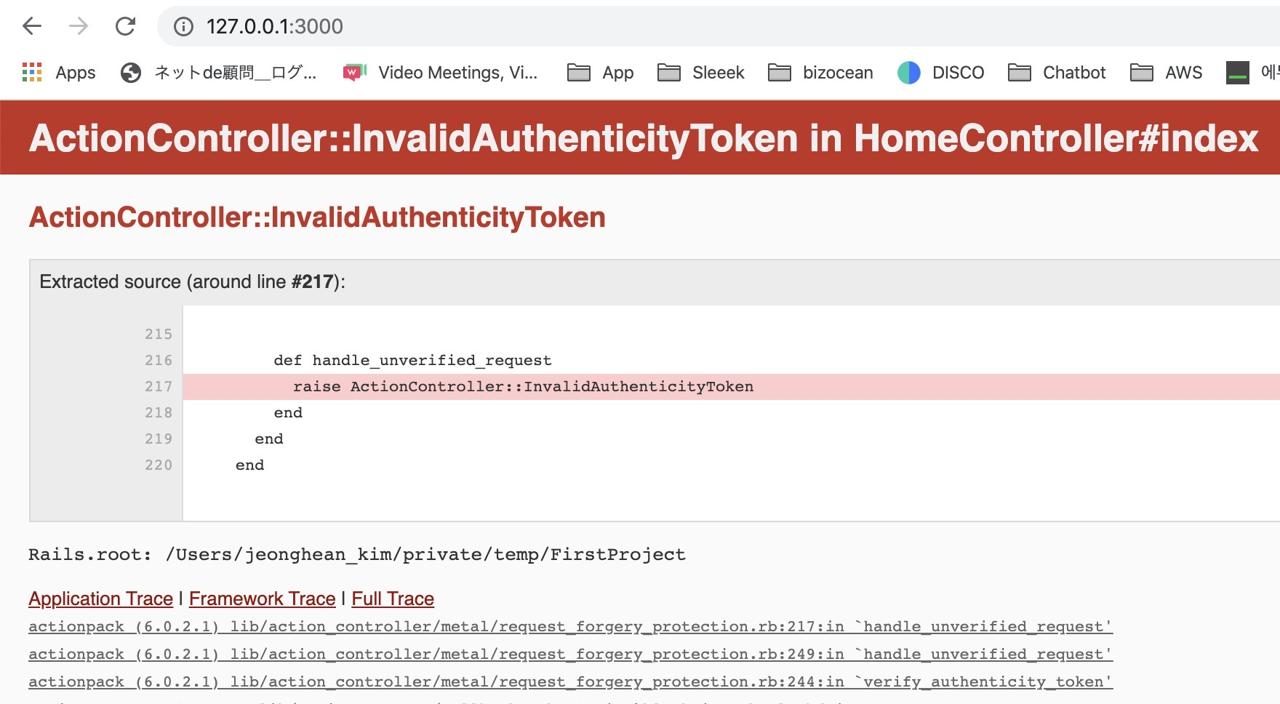
Like other language frameworks, Rails also protects the service from Security vulnerability basically. In here, to protect from CSRF - Cross-site request forgery, Rails requires specific Key when the data is sent via POST.
To solve this error, when you send Data via POST, you should set form_authenticity_token to authenticity_token parameter for Rails.
Open app/views/home/index.erb file again and modify it like below.
Hello <%= @name %>!!<br/>
<a href="/?name=yakuza">Display yakuza</a><br/>
<form action="/" method="POST">
<input type="hidden" name="authenticity_token" value="<%= form_authenticity_token %>" />
<label for="name">name:</label>
<input type="text" name="name" />
<input type="submit" />
</form>
And open http://127.0.0.1:3000/ on the browser. Insert Data and click Submit button, you can send Data well and see the screen like below.
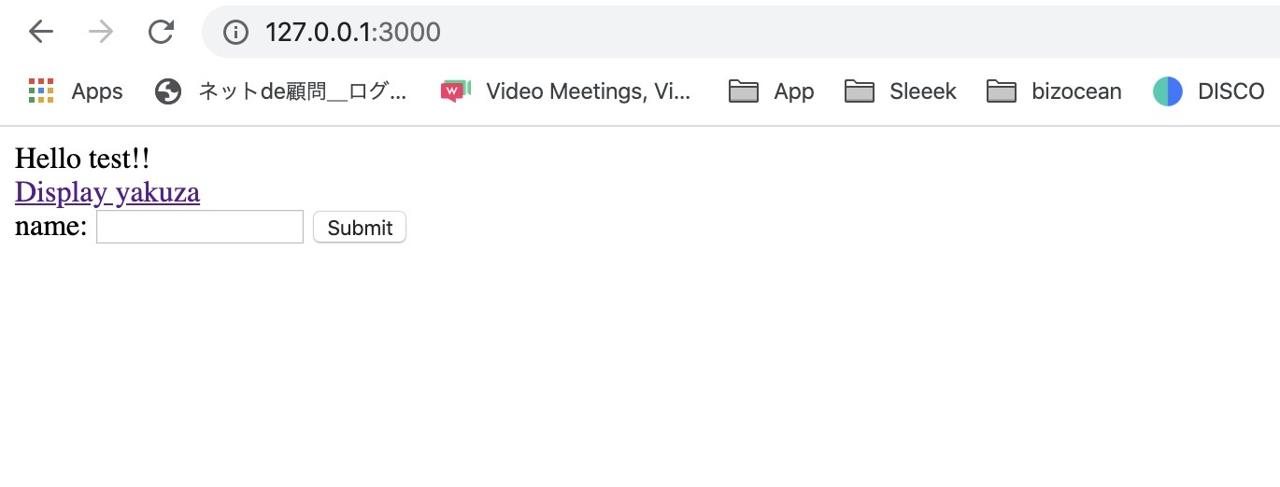
Complete
We’ve seen how to exchange Data between Controller and View.
To send Data from Controller to View, we’ve used Instance variable. To send Data from View to Controller, we’ve used GET/POST method. And we’ve seen how to make POST URL on Route.
In next blog post, I will introduce how to save Data in Database, and show it to View.
Reference
This blog post is a series. You can see the other posts in below.
- Start Ruby on Rails on Mac
- Folder structure in Ruby on Rails
- Add new web page by Ruby on Rails
- Exchange Data between Controller, View and Route
- Use DB on Rails
Also, you can see the this blog post sample source code on Github
Was my blog helpful? Please leave a comment at the bottom. it will be a great help to me!
App promotion
Deku.Deku created the applications with Flutter.If you have interested, please try to download them for free.




